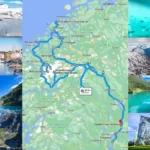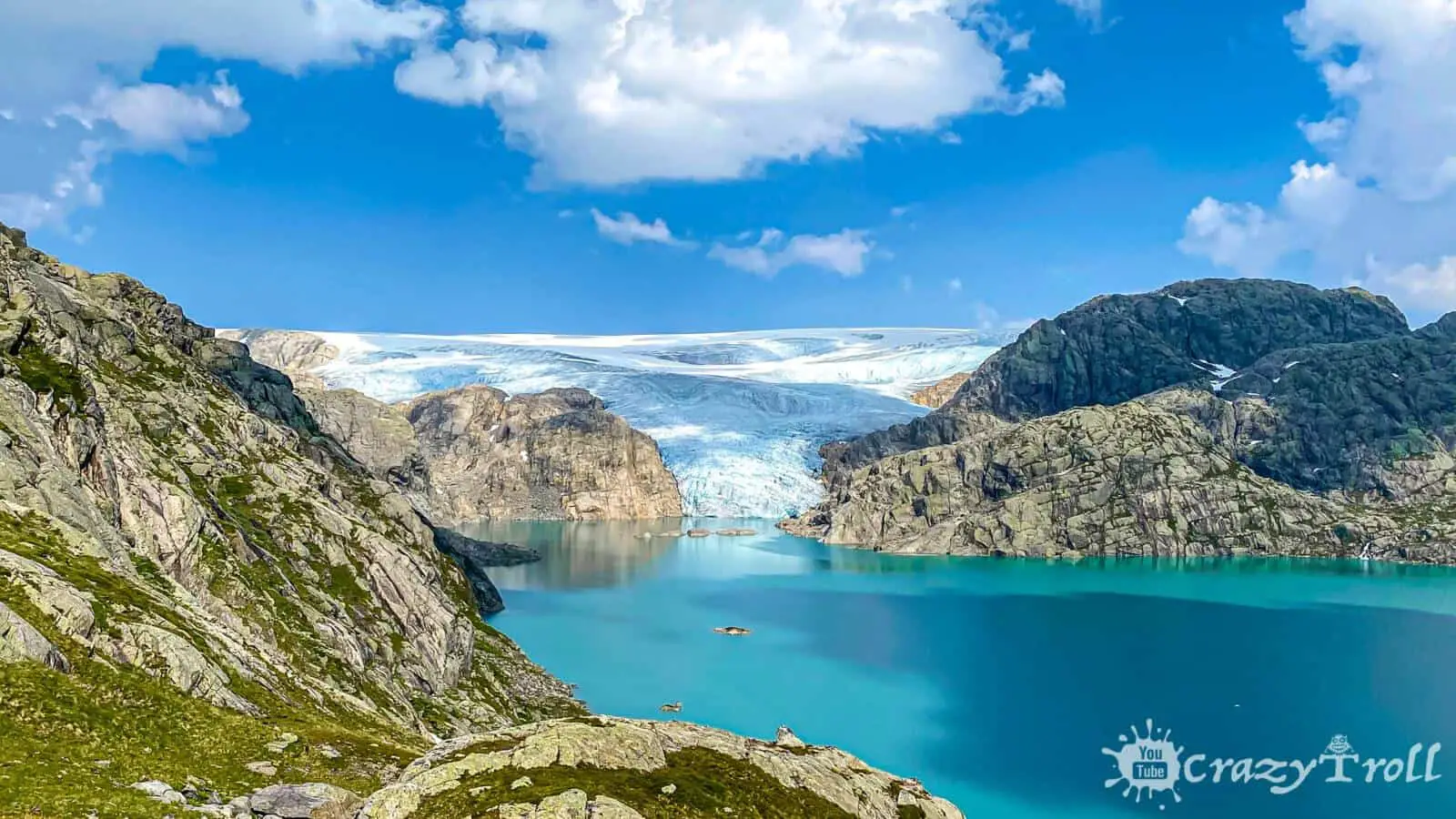The Northern Lights, or Aurora Borealis, have long captured the hearts and imaginations of those who witness their breathtaking beauty. Norway, with its unique landscapes and a prime location within the Arctic Circle, is a dream destination for many seeking to experience this natural wonder.
In this article, we will explore the best times to visit Norway for the Northern Lights, top locations to witness this incredible phenomenon, and helpful tips for planning your unforgettable aurora-chasing adventure.

So, get ready to be enchanted by the mesmerizing dance of colors in the night sky and embark on a journey to experience one of the world’s most awe-inspiring spectacles.
What are the Northern Lights?
The science behind the phenomenon
The Northern Lights, also known as the Aurora Borealis, are a breathtaking natural light display that occurs in the polar regions. This phenomenon is caused by solar particles interacting with Earth’s magnetic field and atmosphere, resulting in a mesmerizing array of colors dancing across the sky.
The colors typically range from green, red, purple, and even pink, with the intensity and location of the display varying depending on the solar activity and atmospheric conditions.
Cultural Significance and Legends
The Northern Lights have captivated humans for centuries, inspiring countless myths and legends. Many indigenous cultures in the Arctic region believed the aurora was the spirits of their ancestors dancing in the sky, while Norse mythology associated the lights with the Valkyries, warrior maidens guiding fallen heroes to Valhalla.
Best time to visit Norway for Northern Lights
The winter months
The best time to visit Norway to experience the Northern Lights is during the winter months, from late September to early April. During this period, the nights are long, providing ample darkness for the lights to be visible. The peak viewing season is between December and February when the skies are at their darkest and clearest.
The solar cycle
The intensity of the Northern Lights also depends on the 11-year solar cycle, with increased solar activity resulting in more frequent and vibrant displays. The next solar maximum is predicted to be around 2025, but that doesn’t mean you can’t enjoy spectacular displays in the meantime, as the aurora can be unpredictable and delightfully surprising.
Top locations to witness the Northern Lights in Norway
Tromsø: The Gateway to the Arctic
Tromsø, often referred to as the Gateway to the Arctic, is situated above the Arctic Circle and serves as a prime destination for Northern Lights enthusiasts.
This vibrant city offers an array of activities and guided tours tailored to aurora hunters, including dog sledding, snowmobiling, and reindeer sleigh rides.
Boasting excellent infrastructure, Tromsø provides visitors with cozy accommodations, exquisite dining experiences, and a lively cultural scene, ensuring a comfortable and memorable stay while chasing the ethereal lights.
Lofoten Islands: A Scenic Wonderland
The Lofoten Islands, an archipelago renowned for its dramatic landscapes and traditional fishing villages, provide a stunning setting for observing the Northern Lights. With jagged mountain peaks, pristine beaches, and crystal-clear waters, the Lofoten Islands offer a one-of-a-kind Arctic experience.
Visitors can immerse themselves in the local culture by staying in traditional rorbu (fishermen’s cabins), exploring the picturesque villages, and even partaking in a variety of outdoor activities such as hiking, kayaking, and wildlife watching during their aurora-chasing adventure.
Svalbard: The Remote Arctic Frontier
Svalbard, a remote and rugged archipelago located halfway between mainland Norway and the North Pole, boasts a pristine, otherworldly environment perfect for experiencing the Northern Lights. With polar bears outnumbering humans, Svalbard offers a true Arctic wilderness experience.
The polar night, which lasts from mid-November to late January, provides an extended period of darkness, allowing ample opportunities to witness the elusive aurora. Visitors can also explore the fascinating history of Arctic exploration, participate in snowmobile safaris, and discover unique ice caves during their stay.
Senja: The Enchanting Island of Contrasts
Senja, Norway’s second-largest island, is a hidden gem for Northern Lights enthusiasts. The island’s diverse landscapes, characterized by rugged mountains, deep fjords, lush forests, and charming fishing villages, create a magical backdrop for viewing the aurora.
Senja offers a tranquil and less-crowded alternative to the more popular destinations, allowing visitors to enjoy the serene beauty of the Northern Lights in a more intimate setting. While on the island, tourists can also indulge in a variety of outdoor activities such as hiking, wildlife watching, and fishing, making it an ideal destination for nature lovers and adventure seekers alike.
How to plan your Northern Lights trip
Guided tours: Expertise and convenience
Opting for a guided tour is an excellent way to maximize your chances of witnessing the Northern Lights, as experienced tour operators have extensive knowledge of local weather patterns and aurora forecasts. Guided tours take you to the best viewing locations and offer expert guidance on how to capture stunning photos of the aurora.
In addition, they often provide warm clothing, tripods, and hot beverages to ensure your experience is as comfortable and enjoyable as possible. Joining a guided tour also allows you to meet fellow aurora enthusiasts and share the excitement of the chase.
Independent travel: Tailor-made adventures
For those who prefer a more personalized approach, independent travel offers the freedom to create a tailor-made aurora-chasing adventure. Here are some key aspects to consider when planning your trip:
Accommodation: Seek out dark skies
When selecting accommodation, it’s essential to choose a location away from city lights to minimize light pollution, which can significantly affect the visibility of the Northern Lights. Many hotels and guesthouses in the Arctic region offer aurora alert services that will notify you when the lights are visible, ensuring you don’t miss a potential sighting.
Consider booking unique accommodations, such as glass igloos, traditional rorbu, or wilderness cabins, to further enhance your Northern Lights experience.
Transportation: Mobility and flexibility
Having access to a car or other means of transportation during your trip can greatly increase your chances of witnessing the Northern Lights. Being mobile allows you to chase clear skies and escape light pollution, giving you the flexibility to find the best possible viewing conditions.
Ensure you familiarize yourself with local driving conditions and consider renting a vehicle with winter tires and four-wheel drive for added safety.
Photography tips: Capture the magic
Creating lasting memories of the Northern Lights through photography can be challenging but rewarding with the right equipment and techniques. To capture the best possible images, invest in a tripod to ensure stability, and use a camera with manual settings and a wide-angle lens to capture the full beauty of the aurora.
Experiment with different shutter speeds, ISO settings, and aperture sizes to find the perfect combination for the conditions. Don’t forget to bring extra batteries, as the cold weather can quickly drain them. Remember to also take a moment to step back from your camera and simply enjoy the enchanting dance of the Northern Lights with your own eyes.
Conclusion
Norway’s Northern Lights are a must-see for anyone looking to experience one of nature’s most awe-inspiring displays. With a variety of stunning locations, accessible guided tours, and a wide range of activities to enjoy, Norway offers the perfect destination to witness the mesmerizing aurora. So bundle up, grab your camera, and prepare for the experience of a lifetime!
FAQs
1. What causes the Northern Lights?
The Northern Lights are caused by solar particles interacting with Earth’s magnetic field and atmosphere, producing a natural light display of various colors.
2. When is the best time to visit Norway for Northern Lights?
The best time to visit Norway for Northern Lights is during the winter months, from late September to early April, with peak viewing season between December and February.
3. Where are the best places to see the Northern Lights in Norway?
Some of the best places to see the Northern Lights in Norway include Tromsø, Lofoten Islands, Svalbard, and Senja.
4. Can I take pictures of the Northern Lights?
Yes, you can take pictures of the Northern Lights with the right equipment, including a camera with manual settings, a tripod, and a wide-angle lens.
5. Are guided tours worth it for viewing the Northern Lights?
Guided tours can increase your chances of seeing the Northern Lights, as tour operators have extensive knowledge of local weather patterns and aurora forecasts. They also provide additional services like warm clothing, photography tips, and hot beverages for a more comfortable experience.








